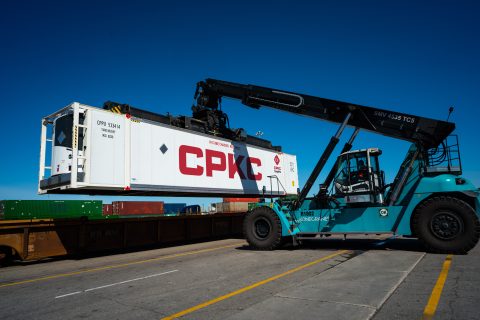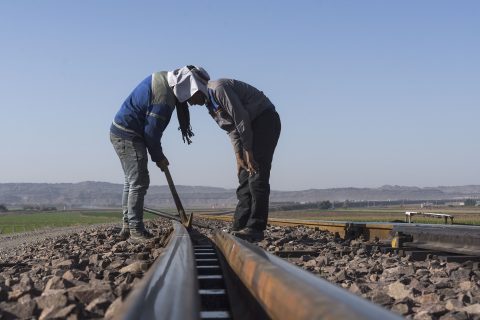KTZ’s Middle Corridor volumes more than doubled in 2022

The Middle Corridor is increasingly establishing itself as a viable alternative to routes crossing Russia. As Kazakhstan’s national railway company, Kazakhstan Temir Joly (KTZ), claimed, the volumes of cargo transported on this route rose by 2,5 times compared to 2021, reaching 1,5 million tons.
Significant growth was also recorded when it comes to Kazakhstan’s exports on the route, which grew by 650 per cent compared to the previous year, reaching 891,000 tons. Moreover, KTZ pointed out that TEUs moved on the Middle Corridor increased by 33 per cent compared to 2021, for a total of 33,6 thousand TEUs.
These numbers were unveiled at the General Meeting of the International Association TITR, held on 8 February in Almaty. At the meeting, the parties involved discussed how to further increase volumes on the route in 2023.
Among the solutions for the future of the Middle Corridor, it was proposed to start “a regular shuttle train on a fixed schedule and creating a single transit product”.
Not only Kazakhstan growing on the Middle Corridor
Kazakhstan is not the first country experiencing volume increases on the Middle Corridor. Azerbaijan Railways (ADY), for example, claimed that 3,9 million tons of cargo were moved on the route, signalling an increase of over half a million tons compared to 2021.
The Baku-Tbilisi-Kars line, which is the railway extension of the Middle Corridor through Turkey, saw 432,284 tons of cargo passing through in 2022. According to ADY, with this throughput, the cargo transit through the line between 2017-2022 reached a total of 1,347,585 tons.
Uzbekistan also deployed its first train on the Middle Corridor at the end of 2022. Loaded with copper, the first train was headed for Turkmensbashi, in Turkmenistan, and then Varna, in Bulgaria, from where it reached Turkey. This was the first time that Uzbekistan opted to bypass Russia.
Also read:
- Azerbaijan Railways sees cargo transport boosted in all directions
- Uzbekistan boards Middle Corridor with first train to Turkey
- Earthquake in Turkey and Syria, railway services suspended
You just read one of our premium articles free of charge
Want full access? Take advantage of our exclusive offer




